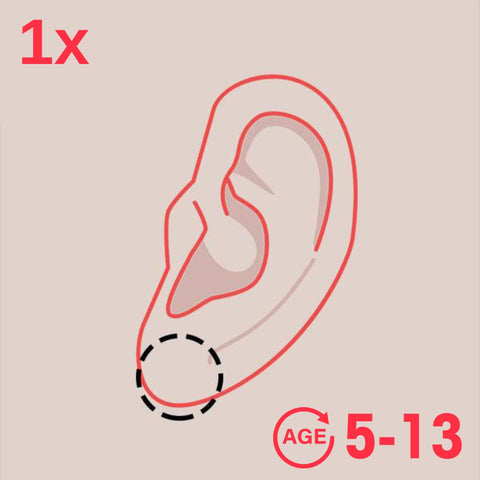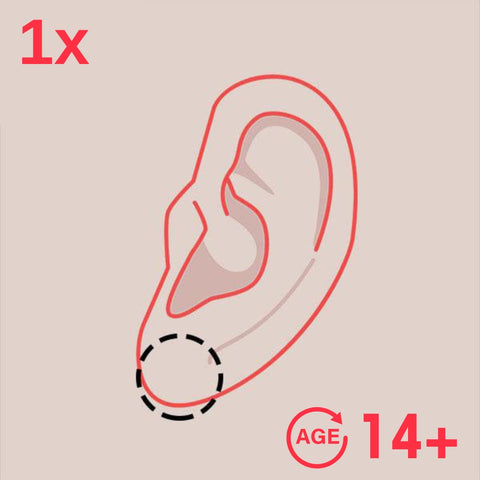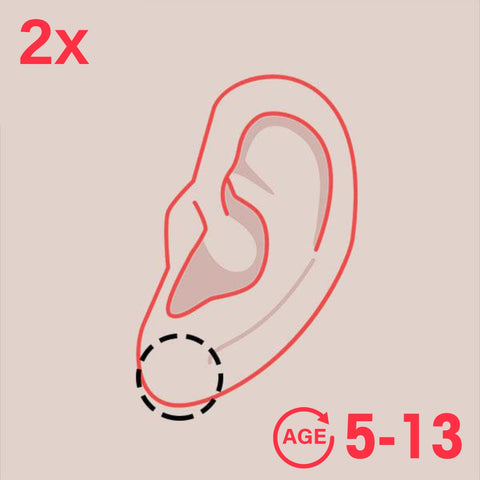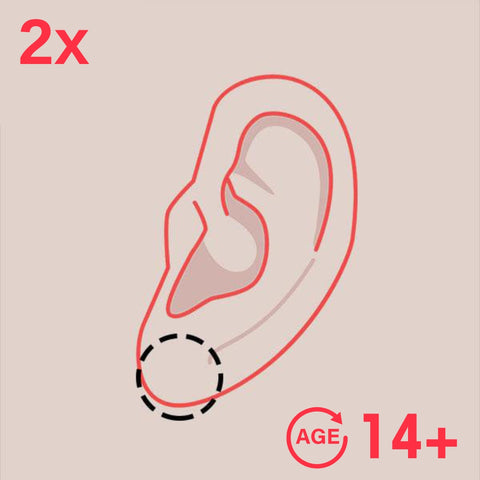Cartilage piercings have become increasingly popular as a fashion statement, allowing individuals to express their unique style. However, like any body modification, there is always a risk of complications, including infections. In this comprehensive guide, we will explore everything you need to know about cartilage piercing infections, their symptoms, prevention strategies, and effective treatment options. Whether you're a piercing enthusiast or a newbie, this article aims to provide you with valuable insights to ensure a safe and successful piercing experience.

Common Causes of Cartilage Piercing Infections
Cartilage piercing infections can be caused by various factors, including:
- Improper aftercare: Failing to clean the piercing regularly or using unsuitable cleaning solutions can lead to bacterial buildup and infections.
- Poor hygiene practices: Touching the piercing with dirty hands or using unsterilized tools can introduce harmful bacteria.
- Low-quality jewelry: Using jewelry made from materials that cause irritation or allergic reactions can increase the risk of infection.
- Trauma or pressure: Excessive pulling, twisting, or sleeping on the piercing can disrupt the healing process and invite infections.
- Environmental factors: Exposure to unclean water, such as swimming pools or hot tubs, can introduce bacteria into the piercing.
Recognizing the Symptoms of Cartilage Piercing Infections
Remember, when you pierce your ear, you are breaching the skin and essentially opening up a wound. It isn’t very painful, but there’s still an open wound, even if only temporarily.
This wound, like any other, is susceptible to bacteria, and if not properly cleaned (and even sometimes when things are properly kept clean) it can become infected.
It's crucial to identify the signs of an infection early to prevent further complications. Common symptoms of cartilage piercing infections include:
- Persistent pain or tenderness around the piercing site
- Swelling, redness, and increased warmth in the area
- Pus or discharge, often yellow or green in colour
- Development of a bump or abscess near the piercing
- Itching or a burning sensation
- Difficulty moving the jewelry or inserting/removing it
- Generalized symptoms like fever, fatigue, or swollen lymph nodes
Prevention Tips for Cartilage Piercing Infections
Follow these preventive measures to minimize the risk of cartilage piercing infections:
- Choose a reputable and professional piercing studio, like Pierced, that prioritizes cleanliness and uses sterile equipment.
- Clean the piercing twice a day with a saline solution or an aftercare product recommended by your piercer.
- Avoid touching the piercing with unwashed hands and avoid unnecessary contact with other people's bodily fluids.
- Be mindful of your sleeping habits and try to avoid sleeping on the pierced ear until it has fully healed.
- Avoid submerging the piercing in unclean water sources, such as pools or hot tubs.
- Stick to high-quality jewelry made from hypoallergenic materials to minimize the risk of irritation or allergic reactions.
Treating Cartilage Piercing Infections
If you suspect or confirm a cartilage piercing infection, here are some steps you can take:
- Do not remove the jewelry, as it may cause the infection to seal inside the piercing.
- Clean the area gently with a saline solution or an antiseptic recommended by your piercer.
- Apply warm compresses to the affected area to promote blood circulation and alleviate swelling.
- Consult a healthcare professional if the infection worsens, the symptoms persist, or if you experience severe pain or systemic symptoms.
How to Prevent Future Irritations
Once symptoms have disappeared, continue with a strong and consistent aftercare routine and visiting a reputable piercer at the first signs of trouble.
Other steps you can take include:
- Not touching your piercing with dirty hands. Cleanliness is very important when it comes to piercings!
- Continue with your recommended 2 step aftercare routine for the entire healing process of your piercing.
- When you sleep, position yourself so that you are not laying on the ear with the piercing. This will prevent it from pressing against your pillow.
By continuing to take proper precautions and continuing to care for your piercing, you can successfully prevent infections.
When Should You Seek Help?
Cartilage infections begin on the surface, but if left untreated they can travel deep into the tissues. Do not put off a visit to the doctor if the infection appears to be worsening. It is better to err on the side of caution, as any infection can become dangerous.
Final Thoughts
Cartilage piercing infections can be uncomfortable and potentially lead to severe complications if left untreated. By understanding the causes, recognizing the symptoms, and following proper aftercare measures, you can significantly reduce the risk of infections. Remember to choose a reputable piercing studio (like Pierced!), practice good hygiene, and seek professional help if needed. With the right knowledge and care, you can enjoy your cartilage piercing journey while keeping infections at bay.
In conclusion, cartilage piercing infections can be prevented and effectively managed with proper knowledge, aftercare, and professional assistance. Stay vigilant, prioritize your safety, and enjoy the unique beauty that cartilage piercings offer.
Piercing Studios Near You
Mississauga
Square One Shopping Centre
100 City Centre Drive, Mississauga,
ON L5B 2C9
Phone
+1 (905) 232 -7226
Need an Experienced Piercer in Mississauga?
Working with an experienced piercer can make all the difference when it comes to your piercing experience. If you’re in the Mississauga, Ontario area and have any questions about ear piercing, body piercing or jewelry, give us a call or stop by our piercings studio today. We’d love to help walk you through what to expect and help you choose the right option.






